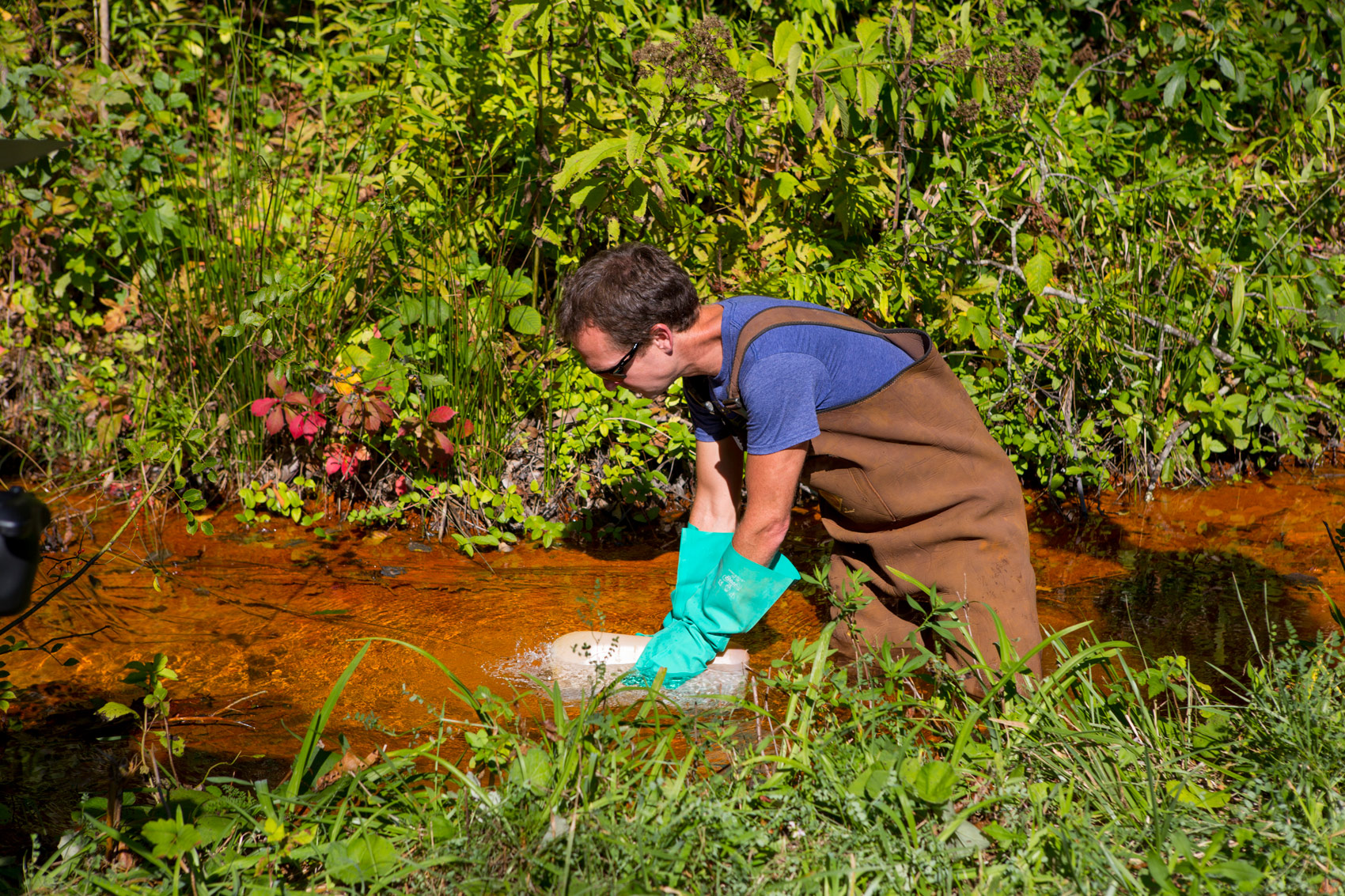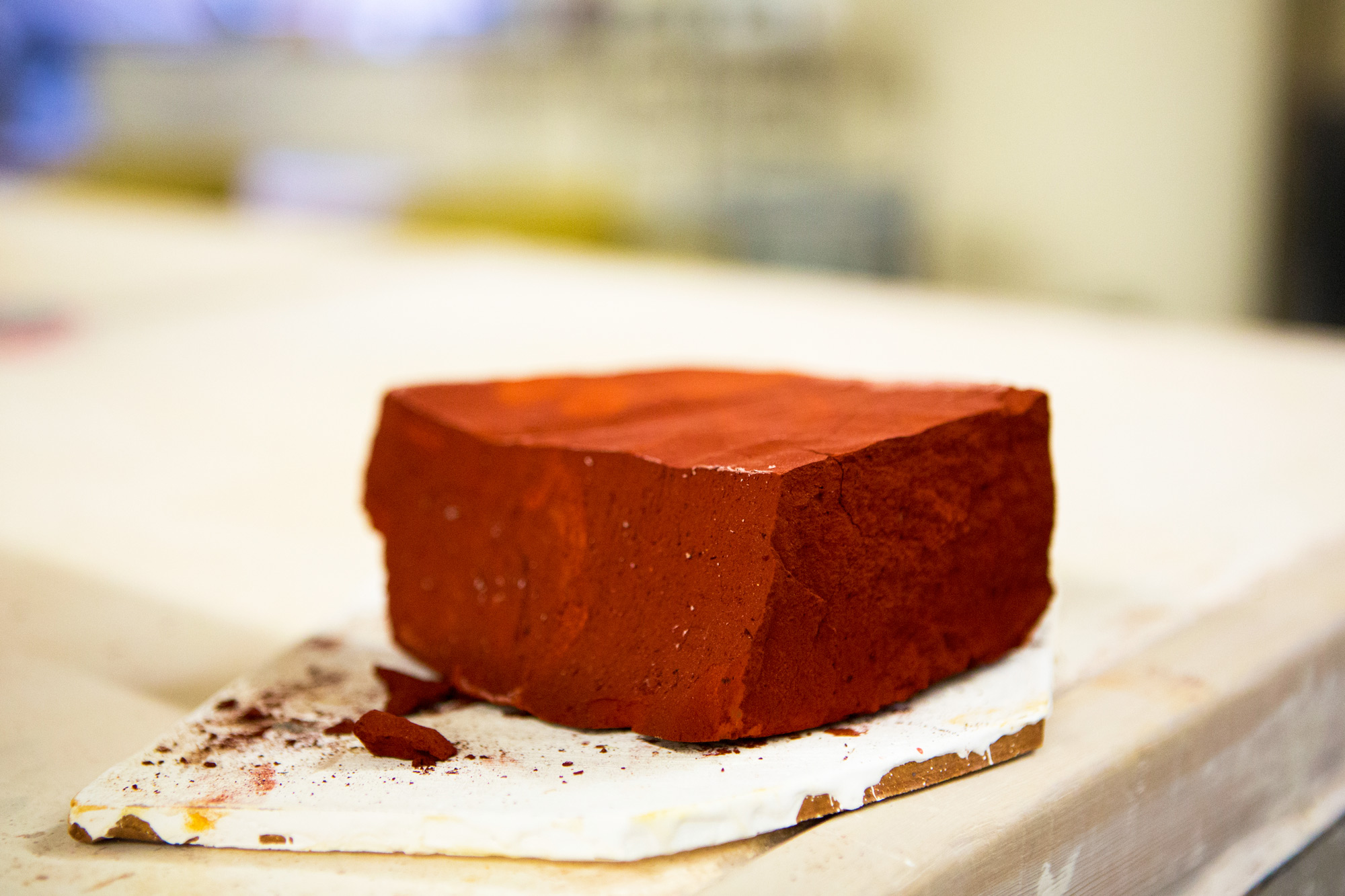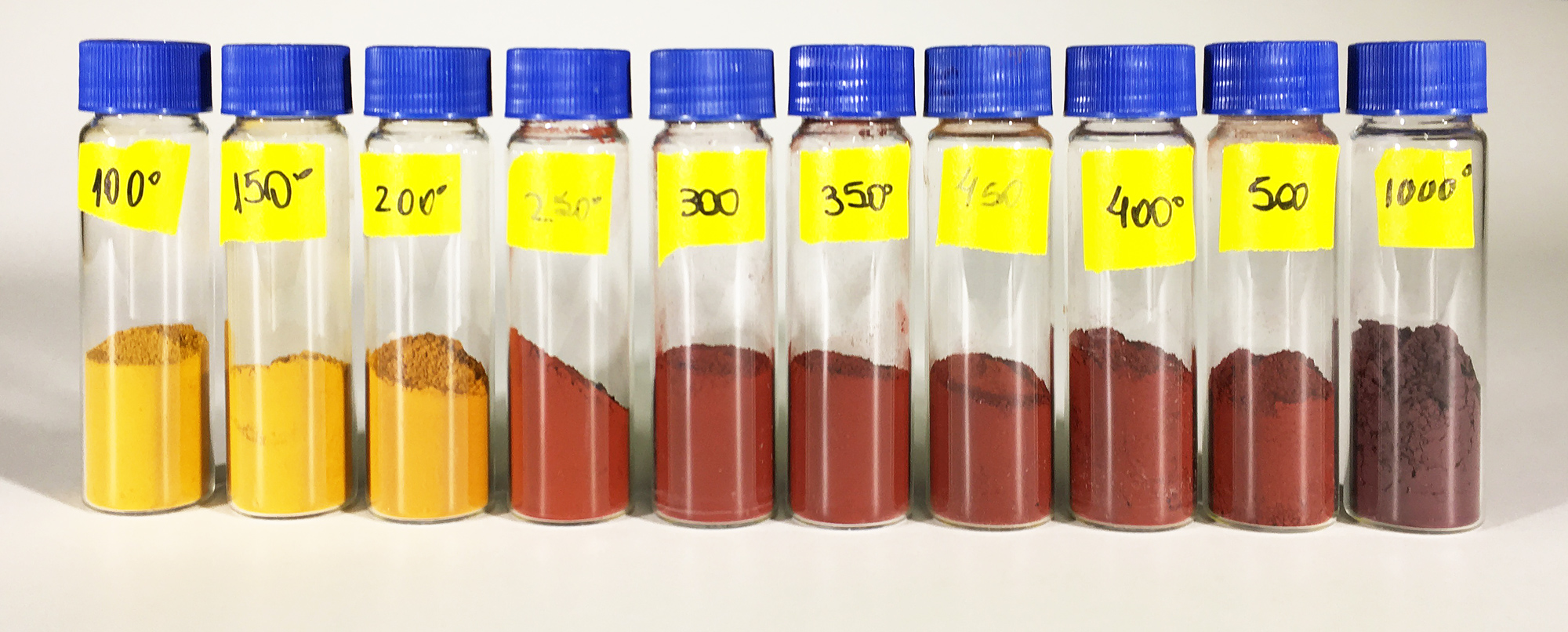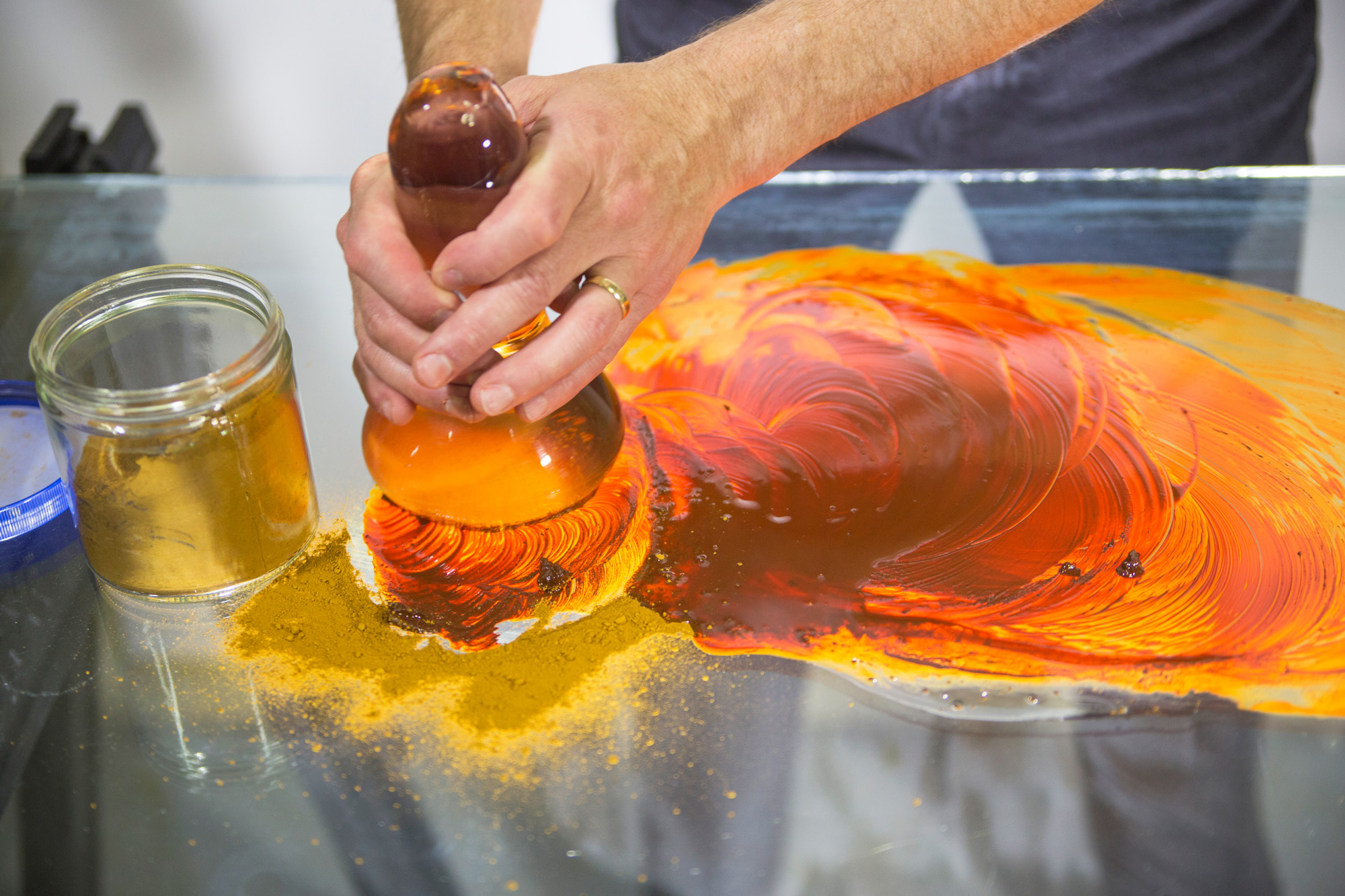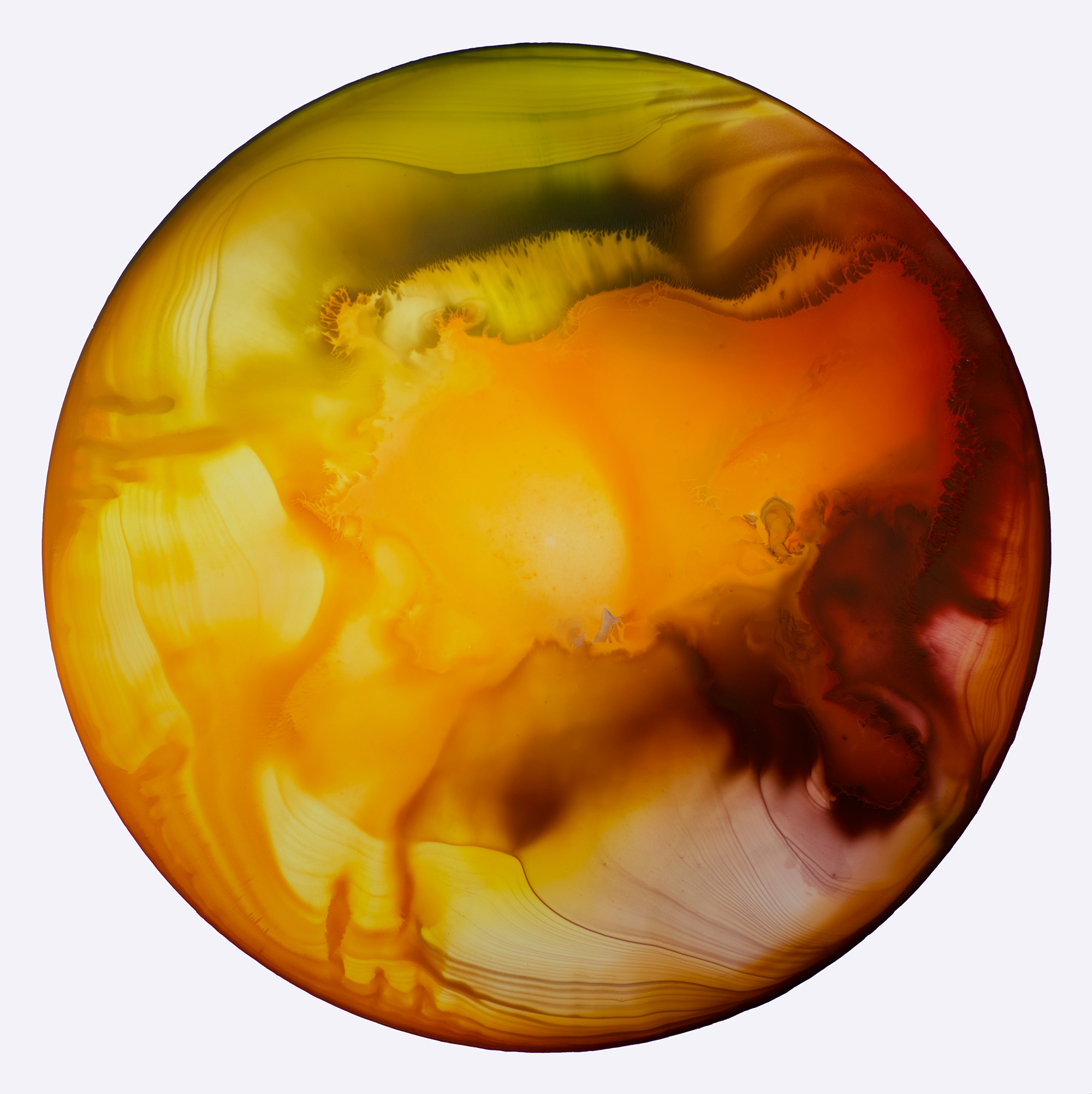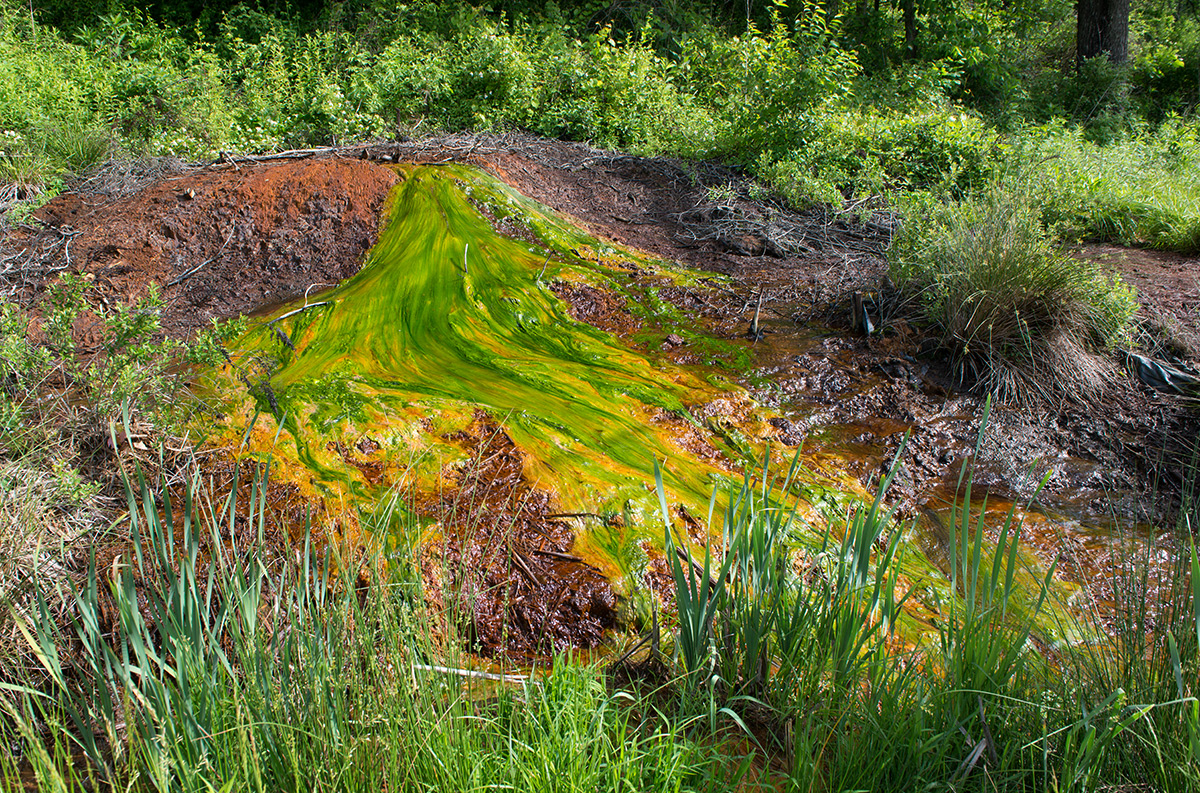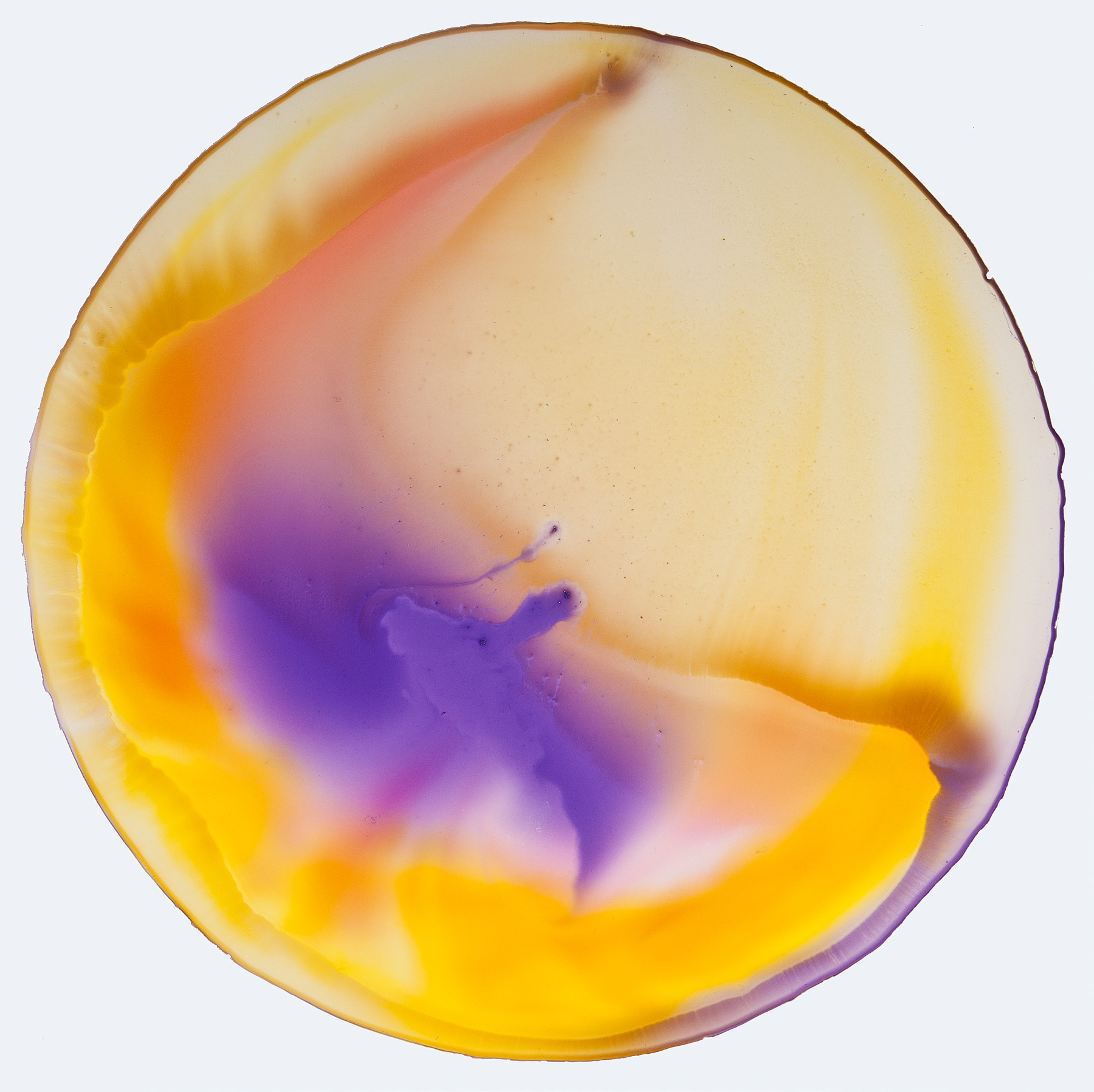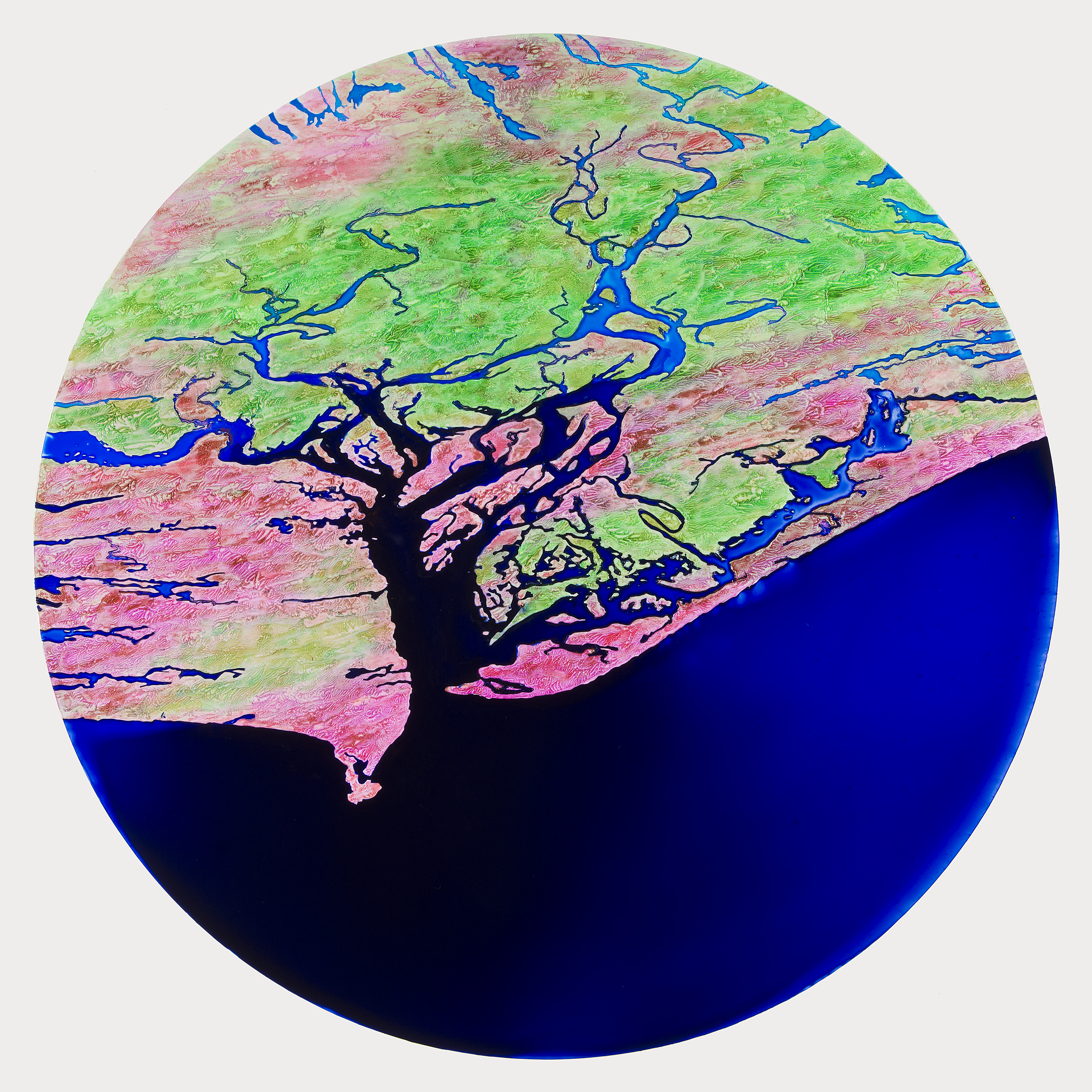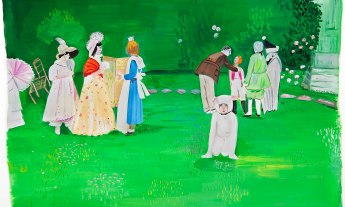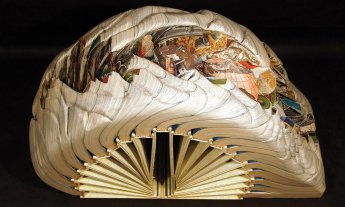Artist and professor John Sabraw is turning industrial acid runoff into striking pigments and paints that could be used to save Ohio’s rivers and streams.
In Ohio, rain is a mixed blessing. Of course, humans and the Earth need it to survive. But every time it pours, water flows down and through the state’s thousands of unsealed, underground mines, sweeps out leftover chemical compounds from mining, and carries this harmful load into the waterways. As a result, in southeastern Ohio where John Sabraw lives and works, “many of the rivers and streams are biologically dead.” Now Sabraw (TEDxWarwick Talk: Toxic art), professor of art and of painting and drawing at Ohio University in Athens, is drawing on those dead rivers to create a new kind of life, in collaboration with OU civil engineering professor Guy Reifler. Here, he shows us how they’re converting an environmental calamity into objects of beauty, one painting at a time.
A toxic harvest
In 2007, Sabraw joined the Kanawha Project, a study group for OU faculty to work on local environmental and sustainability projects. That’s when he became aware of the unhealthy legacy of Ohio’s mining past. More than 3.6 billion tons of coal have been extracted from the state since 1800, and mining companies weren’t held to rigorous environmental standards until recent decades. That meant companies abandoned mines when they were done with them — and as a result, Ohio has roughly 6,000 abandoned underground coal mines that leak acidic, metal-rich effluent into rivers and streams. Sabraw was taken to visit one such waterway; he recalls, “It was disgusting. It was smelly and slimy, and nothing lived in the water. Our guide said it was mostly iron oxide. I said, ‘I paint with iron oxides. Can I paint with this?’”
Sabraw was then connected to Reifler, chair of OU’s civil engineering department, who had been searching for an artist to help him develop pigments from the pollution. Here, Reifler is collecting water at a seep, an area of runoff. You can see a layer of orange iron oxide six inches below the water’s surface, but Reifler is interested in the clear water above it, which contains dissolved iron oxide that can be extracted to make pigment. After taking the water back to the lab, they neutralize it with sodium hydroxide or another base. Then they bubble oxygen through the water, which causes the iron oxide to separate and fall to the bottom. At this point, the water is clean and can be returned to the stream or river.
Creating pigment from pollution
When iron oxide separates from water, it’s a muddy sludge that is, it turns out, can be a useful pigment. To make it into different colors, Sabraw fires bricks of the sludge at different temperatures — up to 2000 degrees Fahrenheit — in a kiln at the university ceramics studio. The excitement of pulling a fresh brick of pigment from the kiln, says Sabraw, is like opening a present on Christmas morning. “It’s just so fun.”
Tubes of toasted iron oxide
The contents of these vials all came from the same stream. On the yellow labels are the temperatures at which blocks of pigment were “cooked.” Toasting the iron oxide yields a wide range of hues, from rich mustards to deep rusts to what Sabraw calls an “unnatural violet” (the 1000 degree vial, far right). “If you’ve ever driven through western Pennsylvania, those mountains from a distance have this amazing violet hue,” he says. “Somehow, we managed to get our pigment that exact hue. And when I’m painting with it, I feel like I’m painting with a mountain.” After the blocks are cooled, they’re rubbed over a steel sieve and ground into a fine powder.
Turning the powder into paint
Here, Sabraw produces an oil-based paint by blending the pigment powder with linseed oil on a slab of tempered glass. He’s wielding a textured glass muller, an artist’s tool that helps him disperse the powder into the base. The glass muller provides enough compression to break down the pigment and forces the iron oxide crystals to stick to the oil. The result is then tubed for use. After he and Reifler finally made a decent paint, Sabraw says, “The first time I used it, I had this memory of being at those sites, smelling the mud and the sulfur and the grasses and the trees, and meeting the locals. So when I was working with it, I also felt kind of worried because I wanted to use it in a way that represented everyone well.”
A picture of what’s possible
Prior to meeting Reifler, Sabraw had been working on hyperrealistic landscapes. One day, he spilled several jars of paint on a sheet of mylar. Frustrated, Sabraw stepped away from his studio for a few weeks. When he returned, the spill had dried into a beautiful mess, far better than what he’d achieved intentionally. That inspired the “Chroma” series. Above is one of the Chroma paintings, and it captures “one of the first times that we got the pigment to be fine and bright enough,” Sabraw remembers. “It was one of those moments where we realized it was possible.” The series is all about unintentional beauty: “Each painting might have have a different source, but it’s more about the phenomenon that when you’re out in nature you don’t have control.”
A puddle of color
Every Chroma piece is created on four-foot-by-four-foot aluminum composite panels that are sandwiched around a plastic center (this durable material is frequently used for outdoor signs). It has a white polyurethane surface that is “just delicious to paint on,” says Sabraw. Here, the circle contains “a giant puddle of water that is like a raindrop on top of a waxed car.” To the puddle, he adds tiny drops of water-based pigments. Why so small? “If I add too much pigment, the whole thing will burst like a raindrop.” After the pigments are placed, Sabraw leaves the painting alone. He explains, “The pigments move around and the picture changes as nature comes in and decides what it wants to do.” It takes weeks for a painting to dry.
A seep-rising find
Carbondale is home to a few of Ohio’s most toxic acid mine drainage sites, and this seep is nearly 20 feet in diameter. What makes it special is its green-yellow slime, the focus of some of the professors’ ongoing efforts. “All the orange, dark red and brown you see, those are iron oxide deposits,” says Sabraw. “The green and yellow are the bacteria that grow there. They like the acidity.” It turns out the microorganisms — the T. ferrooxidans strain — can metabolize the dissolved iron oxide in the water and then excrete it as iron oxide crystals. At the lab, Reifler and Sabraw and the team have harnessed the bacteria to process the toxic runoff (and for which they’ve received a provisional patent). They’re currently investigating how to make this happen on a larger scale, which could allow them to extract iron oxide more quickly and efficiently.
Although his art is the most visible product of the work he and Reifler do, Sabraw emphasizes it rests on the labor of many participants: scientists, graduate students and volunteers. “None of it is in isolation.” He’s had artists ask him about how they can embark on their own cross-disciplinary project. What’s his secret? Speak up, he says. “I think a lot of artists want others to come and find them. That’s not going to happen.” Instead, people need to be proactive about finding their own collaborators.
Change that could spread
While Sabraw and Reifler believe they’ve cracked the code to creating decent pigments and paints from the runoff, you can’t buy their products in an art store just yet. “When you’re dealing with a university and scientists and artists and industry, a new level of patience needs to be achieved,” Sabraw says. “I’m standing by 100 kilograms of pigment ready to go.” They’ve worked out an arrangement with Gamblin Artist Colors, a Portland, Oregon, paint company, and hope to begin distribution in the next year or so. Some of the paint would be given at no cost to artists who are creating sustainable artwork, and profits from the portion that’s sold will go towards the cleanup of Ohio’s watersheds.
A tribute to the Earth
For this painting, Sabraw combined toxic paints with conventional paints, manipulating them to make something that resembled “satellite images and river tributaries,” blending the manmade and natural worlds.
“I’ve gotten a tremendous response to my work from around the world,” he says. “I have received emails from people working in labs, mining companies, and younger people trying to figure out how they can have an impact on the world. It’s funny to think of myself as someone who might have an answer. This has forced me to think: “What is my responsibility now? Can I have a better and bigger impact?”
Sabraw, who has long been concerned about the degradation of the planet, says his work has made him feel more optimistic about the future. “Now that I have this impromptu community that’s grown out of this, I feel more positive about what can be done and that progress can be made,” he says.
All images courtesy of John Sabraw.

